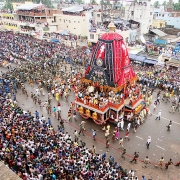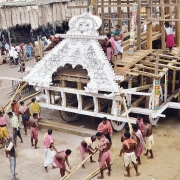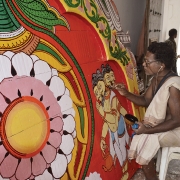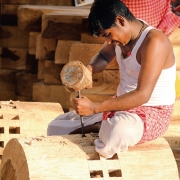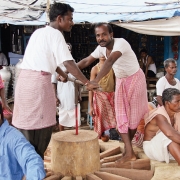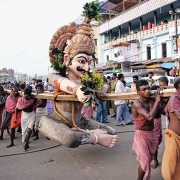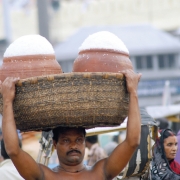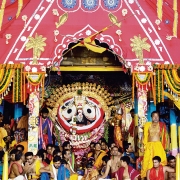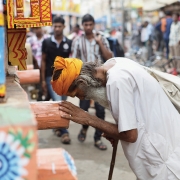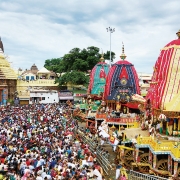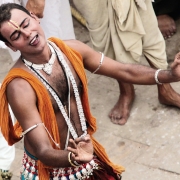
Etcetera
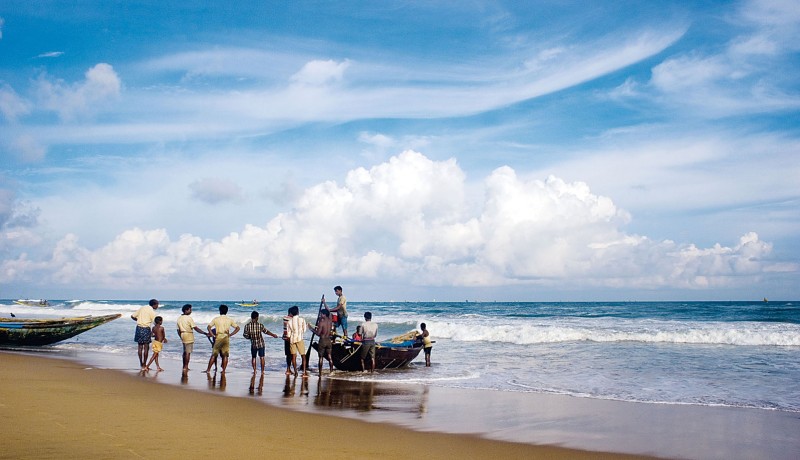
From Lord Jagannath to oceanside beauty and green initiatives, Braja Sorensen uncovers the many layers of Puri
We all have places we go to at certain times of the year, or have holidays earmarked for a particular season or festival time. With Puri, Orissa, the first thing that comes to mind is the annual Festival of the Chariots, the Ratha Yatra, when millions from all over India and the world gather to welcome the Lord of the Universe. It’s always a magical time. But after four visits to Puri in the past 10 months, I can soundly report that any time is a good time to visit this coastal city.
The light and oceanside beauty is the first mystical element that strikes you upon arrival. Waking on the ocean and watching the sun rise and splash the ocean in a rainbow of colours is an experience in itself. Nothing can match the perfect haze-meets-light mixture; the mist over the water as the sun rises; the inexplicable way the ocean can look like a Caribbean tropical isle and not the blue-grey ocean of Orissa. For one magic hour of dawn, the light falls in spectacular ray perfection, and Puri is bathed in a golden-orange light as it wakes.
I was stunned and grateful: as an Aussie girl born on the beach, I long for the sound of waves, the smell of the ocean, and the feel of sand beneath my feet. And Puri never fails to satisfy not only those longings of the child within but those of my mind, heart, and soul: because Jagannath is without doubt the wielder of the magic that happens here.
I’ve been coming to Puri for years, for short stays and long, and usually in January, when the cold chill of Mayapur, West Bengal (where I live), has me longing for the sand and ocean, the warm sun in my bones, and the sense of holiday that a beach—any beach—has the power to cover you with like a veil. There is a peacefulness that surrounds oceanside locations, whether there are crowds of families playing, swimming or lounging on the beach, or an empty stretch pre-dawn; the sense of peace and downtime is more powerful when the ocean is overseeing everything. A favourite area in Puri is the Fishermen’s Beach, down the end of Cakra Tirtha Road, during the early morning hours. Boats dot the ocean waters under the enormously artistic rise of the orange sun; multicoloured fishermen’s boats land on the sands by 6.30 am with their first catch, and, throughout the day, discarded after their work is done, fishing boats lean elegantly and lazily in the sun, waiting for their day to begin again.
While there is plenty to see and do in Puri, the ocean is the beginning and the end in this coastal home of Jagannath, Baladeva and Subhadra Devi. It’s the first thing visitors wake to, as the majority of hotels and guesthouses line the ocean boulevard, all the way from the Coco Palms at the far end of the beach right down to the more western-tourist oriented area at the end of Chakra Tirtha Road. I love the quiet, calm view of swaying coconut palms from the peaceful balcony at Hans Coco Palms, whose beautiful gardens are unmatched; the Mayfair’s new ocean-themed rooms, large and airy with huge balconies and a wonderful sense of spaciousness. Wedding season can be rather noisy in those establishments, whose beautiful settings are a drawcard for marriage festivities.
Last March, I was a guest at the most spectacular wedding in Puri, when the youngest son of the Daitapati family—Jagannath’s personal carers—was married in a grand procession and even grander reception on the expansive lawns of Hotel Holiday Resort, whose endless gardens lead down to the ocean and are quite a distance from the resort’s rooms: another wonderful sense of spaciousness and an open-air, seaside experience. It was a regal affair: indeed, the Daitapatis are very much like the royalty of Puri. And that’s not surprising, when eons of history show that their family were the original founders of the deity of Nila Madhava, who disappeared when King Indradyumna heard of His presence, only to return many ages later as Jagannath, Lord of the Universe. Yes, the same family, the same deity—the Lord’s pastimes are, after all, eternal!
Hundreds of thousands of pilgrims and bhaktas and devotees all wait for that one day a year when that all-attractive Lord Jagannath makes His way out of the temple for the Ratha Yatra and appears before the adoring crowds that line Grand Road. It’s a most spectacular display of pomp and ceremony, colour and celebration, devotion and love, and so much more.
At the Ratha Yatra one year, our seats were next to the temple wall, above the stores that line Grand Road, and we were able to see over the wall and into the compound as they led Jagannath from His altar to His chariot. This year, during the return ratha, Bahuda Yatra, our seats overlooked Grand Road. As the carts rolled slowly and majestically towards us—from Gundica, down the wide esplanade of Grand Road and stopping outside the temple—the roar of the crowd was thrilling, the excitement palpable, and the laughter constant, as the huge smiles of Jagannath, Baladeva and Subhadra Devi beamed out at their dedicated fans.
And on my last visit, just before I set off for Puri, a very special delivery arrived on my doorstep: Ratha Yatra: Chariot Festival of Sri Jagannatha in Puri, a photographic and historic chronicle of the Ratha Yatra by author and photographer Subas Pani, one of the commentators on Doordarshan’s coverage of the event for over 20 years. The observations from his vantage point from over two decades combined with his wondrous eye for beauty and a detailed history of the festival, deities and the town all make for a spectacular visual and intellectual treat for anyone even remotely interested in this town, its people, and its devotional roots.
That said, there is so much more to Puri than its annual festival. Its residents are a special lot: from the spectacular talent of artist Bhaskar Mahapatra—whose work Prime Minister Modi chose to gift to former French president Francois Hollande, and whose photographs are peppered with images of Jacqueline Kennedy, Nancy Reagan, and Ravi Shankar, just to name a few—through to the hardworking but hidden talents of locals like Yugabrata Kar, the brain behind the Green Riders and Barefoot programmes, both geared towards environmental protection.
While countless residents’ lives are geared towards maintaining Puri’s cultural heritage and individuality, Kar’s programs were born from his concern that waning cottage industries were eroding the future livelihood for villagers, and his conclusion that eco-tourism was the most positive, forward-thinking solution. After travelling through more than 25 countries, Kar wanted to promote the traditional sources of livelihood in Puri, the demand for which had fallen drastically with the introduction of technology. He has since set up eco-tourism camps, trained local boys and girls at the Tourism Institute in Puri, and set up jewellery making workshops. All the income has been used to develop what he calls his “three Es”—education, environment, and empowerment: providing scholarships, financial assistance, craft training centres, and agricultural and plantation education, as well as the clean-up of Puri through his Barefoot campaign, which has seen even rickshaws turning green and environment-friendly. His Wildgrass Restaurant, not far from his Heritage Tours (at the entrance to the Mayfair Hotel), is a feather in his cap: a natural, forest-like setting where a wonderful menu full of local cuisine can be enjoyed.
It’s the kind of thing you’d hope for in an oceanside setting like Puri, where the beauty that artist Bhaskar Mahapatra captures in his unique works of local art—a talent his second daughter Mamata has clearly inherited—and through culture, architecture, and history, all of which are clearly evident in the town. In short, there are so many reasons, and as many seasons, to visit Puri, and a wealth of treasures to discover in the many people, projects and festivals that collectively form its real heart.
FACTFILE
GETTING THERE
By air: The nearest airport is Bhubaneswar, an hour’s drive away.
By rail: Puri is connected to all major railway stations.
By road: Buses ply regularly from other cities to Puri.
ACCOMMODATION
All along the Esplanade on the beach front are midrange guesthouses and hotels, all a few thousand rupees each per night and less; along Cakra Tirtha Road, Zed Hotel is an old-style British house at varying rates according to size, all very reasonable. On the higher end, Hans Coco Palms is a couple of kilometres out of town on the beach, a quiet haven with wide lawns and kind and attentive staff (www.facebook.com/thehanscocopalms). Mayfair has twin hotels right near the centre of town, with the Mayfair Heritage and the Mayfair Waves next to each other; their rates are higher-end though (www.facebook.com/MayfairHeritagePuri).
Photos courtesy: Niyogi Featured in Harmony — Celebrate Age Magazine December 2017
Millions gather to celebrate the return of Lord Krishna and his siblings to the their homeland. Subas Pani’s Ratha Yatra: Chariot Festival of Sri Jagannatha in Puri (Niyogi Books; ₹ 1,995; 226 pages) portrays the different phases of the festival
you may also like to read
-
Cracking the longevity code
Small yet impactful choices can be game-changers, writes Srirekha Pillai At 102, there’s no stopping Chandigarh-based Man Kaur, the world’s….
-
Home, not alone
While a regulatory framework is vital for senior-care facilities, the need of the hour is to develop an ecosystem to….
-
Birthday Girl
Published in a special edition to honour Japanese master storyteller Haruki Murakami’s 70th birthday, Birthday Girl (Penguin; Rs 100; 42….
-
A huge treat for music lovers
Published as the revised and updated second edition, Incomparable Sachin Dev Burman (Blue Pencil; Rs. 599; 470 pages) the authoritative….



